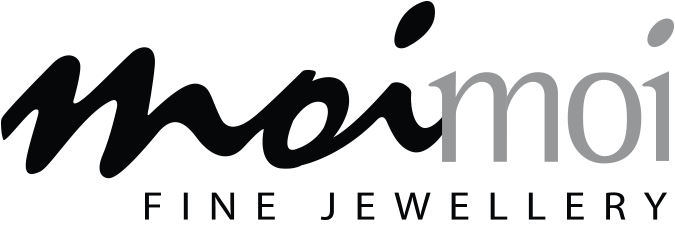Learn About Lab Grown Diamonds
Everything you need to know about Lab Grown Diamonds
Learn About Lab Grown Diamonds
Since the 1930’s diamonds have been the most sought after gemstone for engagement rings, until now. We are in a new and exciting time in fine jewellery. Now you have a choice in diamonds. With continuing advancement in technology, lab-grown diamonds have finally become a genuine alternative to mined diamonds.
A younger, ethically conscious generation are choosing lab-grown diamonds for their engagement rings because they offer better value, better quality and are better for the environment.
Absolutely. A lab-grown diamond is a real diamond. It has the same crystal structure, composition, physical and optical characteristics of mined diamonds. Therefore, it displays the same fire, scintillation, and sparkle. The US Federal Trade Commission (FTC), the leading US consumer body, has ruled in 2018 that a diamond is a diamond no matter the origin.
A quality round white lab-grown diamond of F colour and VS clarity, you can expect to pay anything from US$3,000 to US$3,500. A natural diamond of the equivalent grade would be US$7,000 to US$10,000. Generally, you will save between 50%-70%. With lab-grown pink diamond or lab-grown blue diamond, you will save up to 90%! Incredible savings!
Lab-grown diamonds are more environmentally friendly alternatives to mined diamonds. They do not negatively impact the environment compared to mining a diamond. Whilst electricity is used in growing a diamond, its consumption is insignificant. Choosing a lab-grown diamond not only helps to minimize your environmental footprint but offers a conflict-free diamond with a guaranteed source of origin.
Now you have a choice in diamonds. This is a personal choice. You just need to know the differences, the benefits and the unique story of lab-grown diamonds. You choose lab-grown diamond because you are attracted by the environmental and social responsibility reasons of the lab-grown diamond. Furthermore, the value is undeniable.
Lab Grown Diamonds FAQ’s
Lab-grown diamonds are diamonds.
They are visually, chemically and physically identical to a mined diamond. They display the same fire, scintillation and brilliance.
Premium lab-grown diamonds are graded using the same value factors – the 4 C’s.
Both mined diamonds and lab-grown diamonds are formed when carbon is placed under immense heat and pressure. The only difference is that one is extracted from the Earth, while the other is grown in a highly-controlled environment.
The US Federal Trade Commission (FTC), the leading US consumer body, has ruled in 2018 that a diamond is a diamond no matter the origin.
A lab-grown diamond, having all the same properties as a mined diamond, is therefore a diamond.
Absolutely.
Consumer demand for lab-grown diamonds has greatly increased during the last decade.
A 2018 Wall Street Journal article written by Paul Zimnisky, an independent diamond industry analyst, stated the LGD market is “forecasted to grow at 22% annually by 2023.”
Due to this demand, a downwards price shift for premium lab-grown diamonds is highly unlikely.
No. A lab-grown diamond is visually, chemically and physically identical to a mined diamond.
Highly specialised equipment only found in a gemmological laboratory can reliably tell a lab-grown diamond from a mined diamond.
The best way to tell that a diamond is lab-grown is to look at its grading certificate which is provided for all premium lab-grown diamonds 0.50 carat and above.
In comparison to a mined diamond, a lab-grown diamond is around 75% cheaper. It represents significant value making it a smarter choice for the diamond consumer.
All LAVANA diamonds above 0.50 carats are certified by the International Gemmological Institute (IGI) or Gemmological Institute of America (GIA).
Just like mined diamonds, lab-grown diamonds have different clarities. LAVANA diamonds are only available from SI2 and above.
Learn About Diamonds
THE FOUR C’S
The Four C’s are: Carat, Colour, Clarity and Cut.
These are the four value factors that professionals use to grade, compare and value diamonds. This grading system was developed by the GIA in the 1940’s and universally used by all respected jewellers to provide objective standards in the evaluation of a diamond.
Carat is the unit measurement of diamond weight. One carat is equivalent to 0.2 grams and is sometimes referred to as 100 points. Diamonds weighing less than 1 carat are expressed as points; for example, a 0.50 carat diamond is referred to as a ‘50 pointer’. Diamond weights greater than 1 carat are usually expressed in carats and decimals. For example, a 1.45 carat diamond is expressed as ‘one point four five carats’. Diamonds of the same carat weight can have very different values depending on the other value factors of cut, colour and clarity.
What carat size should I buy?
Carat size comes down to personal preference and budget. While some diamond shoppers prefer the look and fit of a smaller diamond, many seek to buy the largest diamond within their budget. There can be a significant price difference for slightly different carat sizes, however as carat refers to weight, this does not always translate to a significant visual difference. For example, comparing the size of a 1.00ct diamond with a 0.90ct diamond may not yield an obvious visual difference, however the price difference may be enough to bring this diamond within budget.
Two 1.00ct diamonds can look quite different depending on other factors such as Cut, Colour and Clarity. Therefore, it is important to consider all aspects of the 4C’s to ensure you are choosing the best diamond for you.
The ‘colour’ of diamonds actually refers to the lack of colour present in a diamond. Diamonds are graded on a scale from D (colourless), and continues with increasing presence of colour to Z (light colour).
DEF Colourless
GHIJ Near Colourless
KLM Faint Yellow
NOPQR Very Light Yellow
STUVWXYZ Light Yellow
Colour is subjective and it’s very important to consider other factors, particularly the cut of a diamond.
FANCY COLOUR DIAMONDS
Colourless diamonds are by far the most popular, however diamonds are available in many different colours including pink, blue, yellow and green. These colours are called ‘fancy colour diamonds’ and are often valued at a higher price point than a white diamond. Unlike white diamonds, fancy colour diamonds are valued more for their colour intensity rather than their brilliance.
The GIA grading system for fancy colour diamonds was created to accommodate the fact that not all coloured diamonds have a same depth of colour. Yellow diamonds can be found in a range of saturations while blue diamonds are not. Deep, intense shades are valued more highly than pale shades.
Fancy Light
Fancy
Fancy Intense
Fancy Vivid
Diamond clarity refers to the absence of internal inclusions and external blemishes.
Most diamonds contain some form of these characteristics and the number, size, nature and position of these characteristics will affect the value of a diamond.
The clarity of diamonds is graded as:
FL
Flawless
No inclusions and no blemishes visible to a skilled grader using 10x magnification.
IF
Internally flawless
No inclusions and only blemishes are visible to a skilled grader using 10x magnification
VVS1 and VVS2
Very very slightly included
Minute inclusions that range from extremely difficult to very difficult to see are visible to a skilled grader using 10x magnification.
VS1 and VS2
Very slightly included
Minor inclusions that range from difficult to somewhat easy to see are visible to a skilled grader using 10x magnification.
SI1 and SI2
Slightly included
Noticeable inclusions that range from easy to very easy to see are visible to a skilled grader using 10x magnification
I1, I2 and I3
Included
Obvious inclusions are visible to a skilled grader using 10x magnification and may affect transparency and brilliance.
What clarity of diamond should I buy?
Flawless diamonds are the rarest and therefore the most expensive, however a diamond does not need to be flawless to have a stunning sparkle. If the cut of the diamond is excellent, a diamond of SI1 and SI2 clarity can be an excellent choice for value and appearance. These grades are eye-clean, which means the inclusions cannot be seen with the human eye. Avoid I1, I2 and I3 clarity grades for fine jewellery as these grades have inclusions that would affect the brilliance and durability of the diamond.
A diamond’s cut refers to how well a diamond’s facets interacts with light to create brilliance, fire and scintillation. Cut directly affects a diamonds beauty, which is why most jewellers say it the most important factor of The Four C’s.
Diamonds that are cut too deep or too shallow lose light that spills through the side or bottom. As a result, poorly cut diamonds are less brilliant and certainly less valuable. A diamond that is cut to good proportions reflects light internally from one facet to another and then disperses back through the top of the stone.
The cut scale as determined by the GIA is Excellent, Very Good, Good, Fair and Poor.
What Cut Quality of a Diamond Should I Buy?
For fine jewellery, it is recommended to choose the best cut within your budget as a higher cut will often allow you to maintain a diamond’s beauty, even when going with a lower colour or clarity. Very Good or Excellent cuts are good choices as brilliance is the first thing people notice.

 info@moimoi.com.au
info@moimoi.com.au Visit Us
Visit Us






